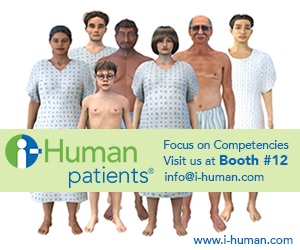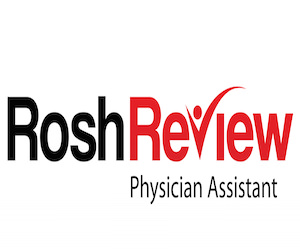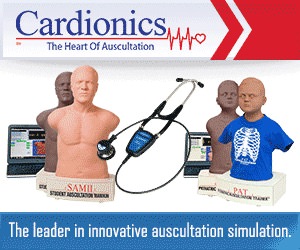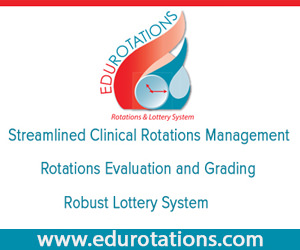Board Candidates
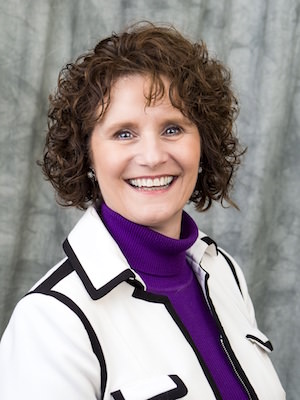
Michelle DiBaise, DHSc, PA-C
Director at Large Platform Statement
I am running for the position of Director at Large for the PAEA Board of Directors. I am a Professor for the AT Still University PA Program in Mesa. I have a passion for improving the diversity of our profession as well as a commitment to training students to provide outreach to underserved communities. I co-authored and obtained funding for a $1 million HRSA Grant, entitled, Physician Assistant Training in Primary Care: A Multi-Faceted Approach to Increase PA Student Recruitment from Underrepresented/Veteran Populations and Primary Care Training and Placement of Graduates in Medically Underserved Populations. I was awarded an nccPA Health Foundation grant for Oral Health Education in 2015 and the Society for Teachers of Family Medicine Smiles for Life Research Award in 2016. I helped develop a free clinic providing interprofessional care to the homeless of central Phoenix.
Over my 26 year career as a PA, I have served in a number of leadership roles for the Profession. These include:
- Chair and Member, PAEA Governance Council, 3 years
- Director at Large, AAPA Board of Directors, 4 years
- President of 4 constituent organizations (COs) Nebraska, Iowa, Arizona, and Society of Dermatology PAs
- Vice President, Chief Delegate and Graduate Advisor of the Student Academy of the AAPA, 6 years
- Delegate HOD for four separate COs for 20 years
- Member and Chair of the AAPA Public Education Committee, 5 years
- Editorial board member for JAAPA, 3 years
- Vice President and Board of Trustees member PA Foundation, 6 years
- In serving in the various positions, I have developed a strong knowledge of policy and the skill sets of strategic planning and visioning, budgeting, public speaking, and team collaboration.
I have long been an advocate for the profession and feel comfortable speaking to legislators to improve access to loan forgiveness for faculty and students and improving PA program funding streams. If elected, I will advocate for our member programs. I will bring an open mind, energy and a passion to the Board to serve the needs of all our members. I will always be willing to listen to the concerns and ideas of our members. I would be honored to serve the membership as Director at Large for the PAEA Board of Directors.
Responses to Association Questions
- What characterizes a high-performing Board member and which of those attributes do you posses that would provide strong contributions to the PAEA board?
High-performing board members should bring a constellation of attributes including, an ability to scan the environment for threats and opportunities, assist with strategic visioning, and to align the board focus prioritizing on issues needing to be addressed while at the same time safe-guarding the mission and vision of the organization. High-performing board members should be objective, open and honest, and provide effective communication to both members of the board and staff, in addition to the PAEA program members. A high-performing board member should be adaptable and have the courage to innovate. This courage must be balanced by monitoring performance through the use of metrics and benchmarking. A high-performing board is willing to utilize metrics for improvement not only for the development of products and services, but also in its commitment to continuous performance improvement as a Board, providing clarity of board and staff roles, and in the ongoing building of trust and respect. Over my 26 year career as a PA, I have served in a number of leadership roles for the PA Profession that have aided in the development of many of these attributes. I have developed a strong knowledge of policy and the skill sets of environmental scanning, strategic visioning, budgeting, public speaking, and team collaboration. I am not afraid to take on innovative projects, but I temper this courage with outcomes measurements. I have participated in self-assessment measurements allowing for self-reflection and growth in my ability to effectively communicate and objectively listen to other members. - If PAEA’s entire budget was represented by $100, what amount of money would you invest in products & services that benefit individual programs (e.g., exams, workshops), and what amount would you invest in initiatives that benefit the field as a whole (e.g., advocacy, legislation)? Please provide rationale for your response.
Out of a representative $100 budget, I would allocate $80 to products and services and $20 towards advocacy and legislation. An increase in the number of PA programs has placed a burden on the annual Education Forum. Each year the number of scholarly submissions has increased as well as the number of attendees. Currently, the Pando series has become a successful skills workshop at different venues. Expansion of the Pando workshops into multiple Education Forums each with a different focus, would allow an increase in the opportunities for scholarly activity for faculty, allow faculty to attend the forum that best fits their focus, and could potentially allow for less expensive travel if the faculty chose a site closer to their program. Other needs that have developed from the rapid program expansion include curriculum development and clinical placements. As technology advances, the ability to live stream expert speakers or develop/deliver hybrid media in the classroom has grown exponentially. PAEA is poised to assist in the development and application of these innovative approaches to curriculum delivery. PAEA could also attempt to tackle the issue of clinical placement shortages, perhaps in partnership with our medical colleagues. While I only applied $20 to advocacy and legislation, I do not view this as less important. I feel this money could be pooled with the four organizations representing the PA Profession. Utilizing the reputation and credibility of our four organizations would allow our profession to come together and advocate with one voice. - What are some of the most important unanswered questions relating to the clinical rotation site shortage that the Board needs to address?
The clinical rotation site shortage is a multifactorial problem that must be addressed. On a Board to Board level, PAEA could communicate with ARC-PA and advocate that change is essential to allow for less proscriptive standards on how a program trains its clinical students. The question must be asked if programs need to do a separate rotation for all required specialties of training or is the real training actually based on the exposure to specific patients and experiences. Placing a student at a Community Health Center and assuring adequate exposure to emergency, surgical, and routine care as well as care across the life span may achieve the same outcome despite not being separated out as individual rotations. Our profession is rooted in medicine, but with the growth of various health professions all providing their unique expertise to the healthcare team, we could be missing training opportunities. Should we utilize experts in areas of training not routinely considered by most programs: podiatrists, nurse practitioners, psychologists, and social workers? The PAEA Board could work to build stronger partnerships with our medical colleagues and develop clinical team training sites allowing teams of healthcare students to work and train together at various sites. Lastly, the Board needs to have a clear understanding of why providers choose not to precept students. It is only through our understanding of the barriers to a healthcare provider serving as a preceptor that will allow PA educators to work to alleviate those barriers. - What are the three most important emerging trends in health care and health care education that will affect PA education in the coming decade?
The most important emerging trends include changes in: the demographic of America and subsequent pressure on workforce planning, the delivery of undergraduate education and technology. With the passage of the Affordable Care Act and the aging of our population, an increased number of patients are accessing the system, many who have significant chronic health issues. The downstream effect is an increase in health care training programs to meet this burgeoning need. The rapid increase in PA programs has led to increased demands for clinical preceptors already burdened with seeing more patients. As a profession we will need to work to assure our students are trained to care for the new demographic, work with other healthcare professionals to provide team-based care in an effort to ease the preceptor shortage, and continue to monitor for future workforce changes. There is a revolution in undergraduate education with competency badges, personalized degrees, inter-institutional training and more. Students in the pipeline now will be applying to PA school with new skills and demands for more innovative approaches to healthcare training. As a profession, we must be prepared to address the new generation of student. Technology has offered PA education new and innovative opportunities for healthcare training: hybrid courses, simulation training, and asynchronous learning. Live-streamed experts can lecture to multiple institutions at one time. But technology has a sharp learning curve and faculty are strapped for time. We need to be on the forefront of faculty development and education innovation in addition to pipelining new faculty.



